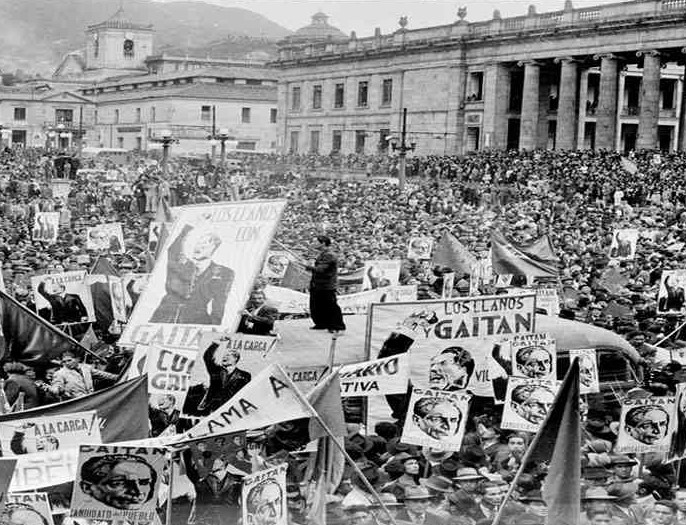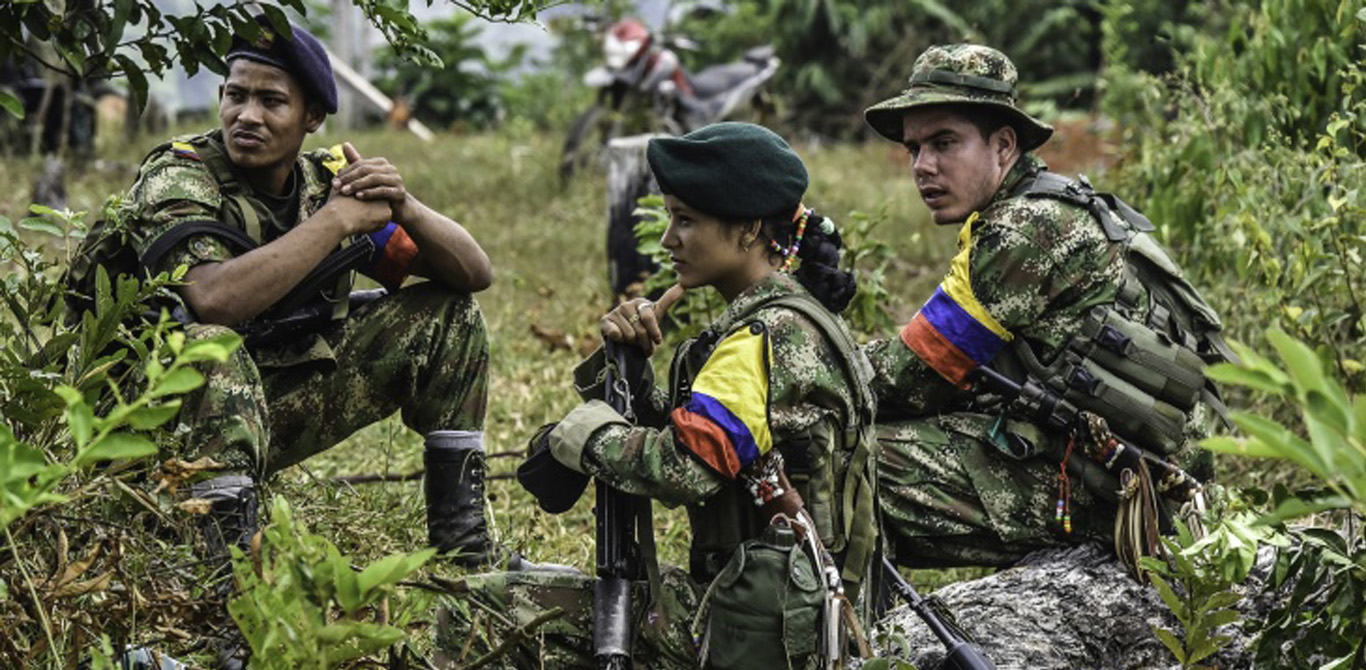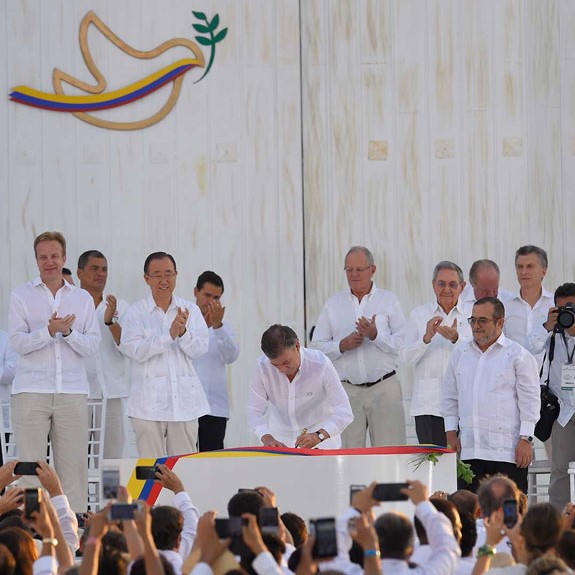Building Positive Peace in Colombia
1. Background
Jorge Eliécer Gaitán was a Colombian socialist, left-wing politician and supported by many Colombians. In 1948, he was assasinated during his second presidential campaign. The assasination, organized by the Colombian elites, sparked a period of violence and unrest, known as La Violencia. Many leftists and revolutionary groups were formed to overthrow the Colombian government. After a decade, with almost 200,000 deaths and the destruction of most of the country, a peace settlement was reached between the right and left-wing parties. Despite the settlement, many revolutionary groups continued to operate and are still active today.

2. FARC
The most well known revolutionary group was the Fuerzas Armadas de Colombia (FARC),
They believed in Marxist ideologies and mainly hoped to redistribute land to poor farmers. The FARC
were known to deploy military tactics and terrorism. Even though their main target was the Colombian army,
they often attacked civilians who they suspected to be supporters of the paramilitary or government, journalists, and
social leaders. In addition, many of their operations were funded through kidnap and production of
illegal drugs. Hence, many global organizations and countries have recognized the FARC as a terrorist group.

3. Peace Process
In 2016, the Colombian President, Juan Manuel Santos, was able to sign a peace deal with the FARC. Informal negotiations between the parties have taken place in the past but none reached an official agreement. It was stated that the FARC will turn in their arms to the government, and seize production and distribution of drugs, in exchange for redistribution of land, guaranteed seats in congress and not face any punishments for any violent acts committed prior to the agreement.

The majority of Colombians, however, voted against the peace deal. 50.2% of Colombians voted against it; many stating that they did not want a "terrorist group", to be members of congress. It is important to note that the areas that were hardest hit by the conflict voted in favor, while major cities that were not impacted by the violence, voted against it.
4. Positive Peace and Saltamontes Network
Though peace has been archieved on papers, many Colombians still have a hard time moving on. This period of peace is new and unfamiliar.
The absence of violence, however, does not equate to peace. Colombia lived through bloody decades that violence has become part
of the culture and mindset. Many grew up knowing nothing but violence. These cannot be changed by signing a piece of paper.
Saltamontes Network was created specifically to address these issues:
to help Colombians build positive peace, specifically in rural, remote areas. Positive peace involves more than just politics.
It requires economic and social development in order to build a longer lasting peace. Saltamontes has been organizing
educational and networking events to facilitate community building and pave the path to peace.
During my time with Saltamontes, I helped translate educational talks to English, as well as give talks myself
to share the perspective as a Chinese in Colombia. I also spent most of my time designing a networking platform
specifically to connect organizations and social activists of different fields in Colombia.
If you would like to learn more about Saltamontes Network, check out their
website and
Instagram.